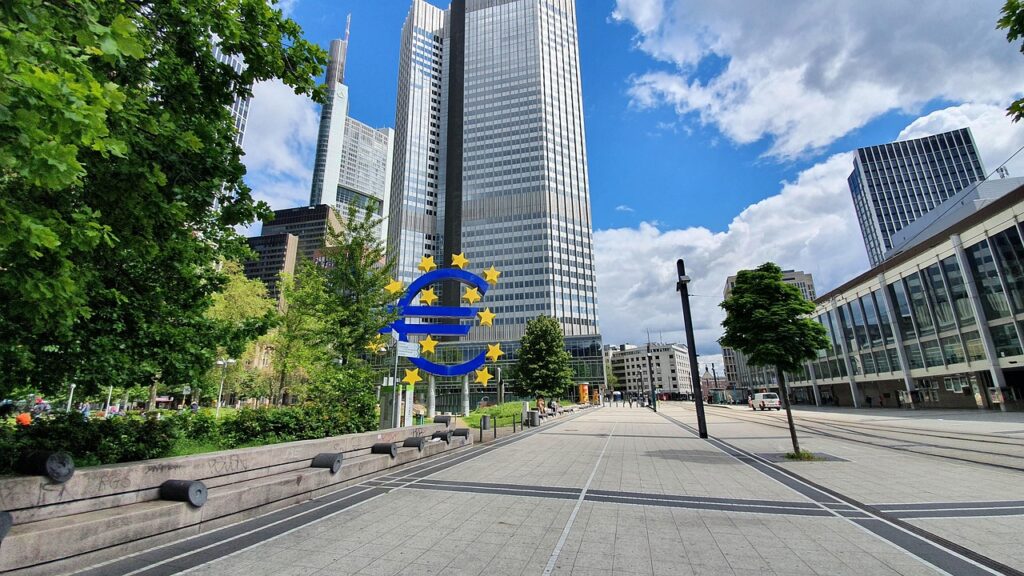
Introduction
For months, the mood in financial markets was cautiously optimistic. Investors had begun to believe that the era of high interest rates was nearing its end, that central banks would soon loosen their grip, and that the global economy might exhale after two relentless years of inflation fighting.
But over the past few weeks, that optimism has evaporated. Global bond markets have tumbled, yields have climbed to uncomfortable heights, and traders are coming to terms with a sobering reality: central banks may not cut rates as soon — or as deeply — as they hoped.
The sell-off is not just about numbers on a screen; it’s a reflection of fatigue, frustration, and fear. The very instruments once seen as safe havens — government bonds — have become the stage where global uncertainty now plays out.
The sudden turn in sentiment
At the start of the year, bond markets were buoyed by a simple narrative: inflation was cooling, growth was slowing, and policymakers would soon have room to ease. Futures markets even priced in multiple rate cuts by the Federal Reserve, the European Central Bank, and the Bank of England.
Then came reality. Inflation data proved stickier than expected. Labor markets remained resilient. Consumer spending, though uneven, refused to collapse. What began as an orderly repricing of expectations has turned into a broad-based bond sell-off, with yields rising across the U.S., Europe, and Asia.
The benchmark U.S. 10-year Treasury yield has edged back toward levels unseen since late 2023, while German Bunds and British Gilts have followed suit. The message from markets is clear: the era of easy money is not returning anytime soon.
The psychology of disappointment
What makes this episode different is the tone. The market is not panicking over crisis — it is sulking over lost comfort. After years of ultra-low rates, investors became accustomed to the idea that central banks would cushion every downturn. Now they’re realizing that inflation has changed the rules of the game.
Central bankers, once eager to reassure, are now wary of fueling complacency. The Federal Reserve’s recent remarks emphasized “patience.” The European Central Bank spoke of “data dependency.” In the opaque language of monetary policy, those words mean the same thing: we’re not ready to cut yet.
That subtle shift in tone has a powerful effect. Investors read hesitation as resistance. And in markets built on expectations, resistance feels like betrayal.
The ripple across continents
The sell-off is global because the financial system is global. When U.S. yields rise, they pull everything else upward — from European government bonds to emerging-market debt. Investors holding long-duration assets have seen weeks of steady losses.
In Asia, central banks face a dilemma: if they keep their rates low while global yields rise, their currencies weaken; if they follow the tightening trend, their domestic growth falters. In emerging markets, where borrowing costs were already high, the impact is particularly severe. Countries that refinanced debt during the low-rate years are now struggling to roll it over without paying a painful premium.
Capital is flowing back to the dollar, draining liquidity from smaller economies. What started as a shift in expectations in Washington is now tightening credit conditions from Johannesburg to Jakarta.
Why central banks are hesitating
It’s easy to accuse policymakers of caution, but their dilemma is real. Inflation may be lower than in 2022, yet it remains stubbornly above targets in most developed economies. Wage growth, housing rents, and energy costs keep pressure on prices. Cutting rates too soon risks reigniting the very problem they’ve fought to contain.
Moreover, the global economy is not collapsing. The U.S. continues to post moderate growth; Europe has avoided a deep recession; and China, despite its struggles, remains a major engine for global demand. Central bankers see little justification for easing aggressively when the data still whisper resilience.
They know that credibility — once lost — is costly to rebuild. Better to err on the side of patience than to repeat the mistakes of the 1970s, when premature easing led to years of inflationary cycles.

The human side of tightening
But markets are not the only ones paying the price. High yields translate into more expensive mortgages, pricier loans, and tighter credit for businesses. Governments, too, feel the strain as the cost of servicing debt climbs. For heavily indebted nations, particularly in Europe and Latin America, every uptick in yield means fewer resources for public spending.
Ordinary savers may benefit from better returns on deposits, but the broader economy suffers when credit dries up. In corporate boardrooms, investment plans are being postponed. In households, people hesitate to buy homes or cars. A generation that grew up believing in low rates is learning what restraint feels like.
The fragile rhythm of global finance
Bond markets are often described as the “nervous system” of the global economy — sensitive, reactive, prone to overreaction. When they tremble, everything else follows. The recent sell-off shows how interconnected the financial landscape has become: a speech in Washington can unsettle pension funds in London, real-estate markets in Seoul, and currencies in Santiago.
It also highlights the limits of prediction. Economists, for all their models, remain hostage to emotion. Optimism turns to anxiety in a single data release; hope becomes fear with one sentence from a central banker. The market is not a machine — it’s a mirror reflecting collective psychology.
Between patience and paralysis
So where does this leave investors? Somewhere between resignation and strategy. Many have shortened the duration of their portfolios, seeking protection from further rate volatility. Others are moving into cash or high-yield corporate debt, accepting more risk in exchange for return.
Yet the deeper question is whether the world can adapt to a “new normal” of higher rates. For nearly two decades, cheap money distorted everything — asset prices, borrowing behavior, corporate valuations. The adjustment to a more expensive world will not be smooth. But perhaps it is necessary. Perhaps markets are rediscovering what risk actually costs.
Conclusion
The fall in global bond prices is not a crisis in the traditional sense. It’s a reckoning — a collective realization that the comfort of the past decade is gone. The promise of quick rate cuts was always fragile, a hope built on selective reading of data.
Now, as investors watch yields climb and portfolios shrink, a new discipline is emerging: the discipline of patience. Central banks are no longer the guardians of market calm; they are guardians of credibility. And credibility, once tested, demands time.
The message is neither dramatic nor comforting, but it’s real: the world’s financial pulse is beating faster, not from panic, but from adjustment. And in that uneasy rhythm lies the truth of this moment — that stability, like trust, must be earned again.






